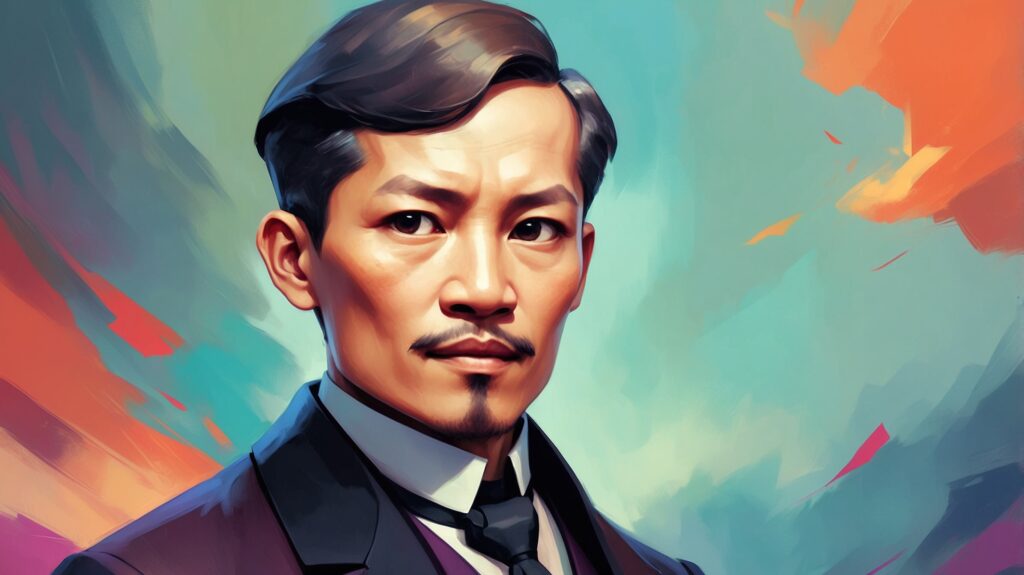You’ve probably seen his stern face staring back at you from the one-peso coin countless times, but José Rizal was far more than just Philippines’ favorite numismatic model. Born on June 19, 1861, in Calamba, Laguna, this remarkable polymath wasn’t your average 19th-century Filipino. Picture this: a young man who could speak 22 languages, write novels that would shake the Spanish colonial system to its core, and still find time to practice ophthalmology. Talk about putting our modern-day multitasking skills to shame! His life was a fascinating blend of intellectual pursuit, patriotic fervor, and just a dash of romantic drama that would make today’s telenovelas look tame.
From Calamba to World Citizen: Rizal’s Educational Journey
Early Years and Academic Excellence
Like many great stories, Rizal’s began with a mother who believed in the power of education. Teodora Alonso, his mother, taught him to read and write at the age of three. From there, young José’s appetite for knowledge became practically insatiable. He blazed through his early education like a academic superhero, collecting degrees and languages like some collect social media followers today.
Global Education and Influences
Rizal’s educational journey took him across continents, making him one of the most well-traveled Filipinos of his time. Here’s a breakdown of his impressive academic trail:
| Year | Institution | Location | Field of Study |
|---|---|---|---|
| 1872-1877 | Ateneo Municipal de Manila | Philippines | Bachelor of Arts |
| 1878-1882 | University of Santo Tomas | Philippines | Philosophy and Letters, Medicine |
| 1882-1885 | Universidad Central de Madrid | Spain | Medicine, Philosophy and Letters |
| 1885-1887 | University of Paris | France | Ophthalmology |
| 1886-1887 | University of Heidelberg | Germany | Ophthalmology |
Source: National Historical Commission of the Philippines (NHCP)
The Pen is Mightier: Rizal’s Literary Legacy
Novels That Shook an Empire
If Rizal were alive today, he’d probably be a bestselling author with a massive Twitter following. His two novels, “Noli Me Tangere” (Touch Me Not) and “El Filibusterismo” (The Reign of Greed), weren’t just ordinary books – they were the 19th-century equivalent of viral content that exposed the corruption and abuses of Spanish colonial rule. These weren’t just stories; they were carefully crafted literary grenades that exploded in the consciousness of Filipino society.
Literary Works and Their Impact
Here’s a quick look at Rizal’s major literary contributions:
| Work | Year Published | Key Themes | Impact |
|---|---|---|---|
| Noli Me Tangere | 1887 | Social injustice, colonial abuse, Filipino identity | Sparked nationalist consciousness |
| El Filibusterismo | 1891 | Revolution, revenge, social reform | Intensified calls for reform |
| To the Filipino Youth | 1879 | Patriotism, education, future of the nation | Inspired generations of young Filipinos |
| Mi Último Adiós | 1896 | Love of country, sacrifice, hope | Became a symbol of patriotic sacrifice |
Source: Philippine Department of Education
Reform Not Revolution: Rizal’s Political Philosophy
Rizal’s political views were like that friend who always chooses the diplomatic route in arguments. He believed in peaceful reform rather than violent revolution, which might seem a bit surprising given how fiery his writings could be. His approach focused on education, cultural pride, and systematic change – thinking that would be right at home in today’s social justice movements.
The Renaissance Man: Rizal’s Many Talents
Jack of All Trades, Master of Most
If Rizal had a LinkedIn profile, it would probably crash the server. Check out this impressive list of his skills and accomplishments:
| Field | Notable Achievements |
|---|---|
| Medicine | Practiced ophthalmology in Hong Kong |
| Arts | Created sculptures and paintings |
| Literature | Wrote poems, essays, and novels |
| Sciences | Conducted research in biology |
| Languages | Mastered 22 languages |
| Sports | Skilled in martial arts and fencing |
Source: Rizal Museum Archives
Love Life and Personal Relationships
Let’s talk about something that makes Rizal surprisingly relatable – his love life. Before there was “complicated” relationship status on Facebook, there was Rizal juggling long-distance relationships and writing love letters that would put modern-day romantic texts to shame. His most famous romance was with Josephine Bracken, but he had several other significant relationships that influenced his life and works.
The Final Chapter: Martyrdom and Legacy
The Path to December 30
The events leading to Rizal’s execution on December 30, 1896, read like a thriller’s climax. Charged with rebellion, sedition, and conspiracy, his trial was about as fair as a rigged game show. Yet, even in his final hours, he managed to smuggle out his famous poem “Mi Último Adiós” (My Last Farewell) – tucked inside an alcohol stove and given to his sister.
Impact on Modern Filipino Society
Rizal’s influence on Filipino society is like Wi-Fi – it’s everywhere, even if you can’t see it. His ideas about education, social justice, and national pride continue to resonate in modern Philippines. Here’s how his legacy lives on:
| Aspect | Modern Impact |
|---|---|
| Education | Mandatory study of his life and works in schools |
| Governance | Inspiration for anti-corruption movements |
| Culture | National hero status influencing arts and media |
| Social Reform | Blueprint for peaceful advocacy |
| National Identity | Symbol of Filipino excellence and patriotism |
Source: Philippine Commission on Higher Education
Why Rizal Matters Today
In an age of social media influencers and instant celebrities, Rizal’s example of intellectual rigor and moral courage stands out even more. His message about the importance of education, critical thinking, and standing up for what’s right resonates perfectly with modern challenges. Whether it’s fighting fake news or standing up for social justice, Rizal’s principles provide a valuable blueprint.
Celebrating Rizal Day
Every December 30, the Philippines commemorates Rizal Day with various celebrations and ceremonies. It’s not just another holiday for sleeping in (though that’s nice too); it’s a chance to reflect on the values and ideals that Rizal fought and died for. Schools, government offices, and various organizations hold special programs, and the main celebration at Rizal Park in Manila draws thousands of visitors.
The Living Legacy: Modern Applications of Rizal’s Ideals
Rizal’s thoughts on education, social justice, and national development weren’t just ahead of his time – they’re still ahead of ours. His emphasis on education as a tool for national development could have been written for today’s knowledge economy. His ideas about social reform through peaceful means echo in modern movements for change. Even his warnings about the dangers of corruption and abuse of power could have been ripped from today’s headlines.
Resources and Further Reading
For those who want to dive deeper into Rizal’s world (and trust me, it’s worth the dive), here are some recommended resources:
| Resource Type | Where to Find |
|---|---|
| Original Works | National Library of the Philippines |
| Academic Studies | Rizal Library, Ateneo de Manila |
| Digital Archives | Project Gutenberg |
| Historical Sites | Rizal Shrine, Fort Santiago |
Source: National Library of the Philippines
Conclusion: Why Rizal Still Rocks
José Rizal might have left us over a century ago, but his legacy is anything but ancient history. In an era of instant heroes and viral sensations, his example of sustained, principled resistance to injustice and dedication to national development remains powerfully relevant. Whether you’re a student struggling with your Rizal course, a history buff, or just someone trying to make sense of today’s world, Rizal’s life and works offer valuable insights and inspiration.
Disclaimer: While every effort has been made to ensure the accuracy of the information presented in this blog post, some details about historical events and figures may vary across different sources. This article draws from official historical records and academic sources, but we acknowledge that historical interpretation can evolve with new research. Please report any inaccuracies to our editorial team for prompt verification and correction. All dates, quotes, and statistical information have been cross-referenced with official sources including the National Historical Commission of the Philippines (NHCP), Philippine Department of Education, and the National Library of the Philippines.




